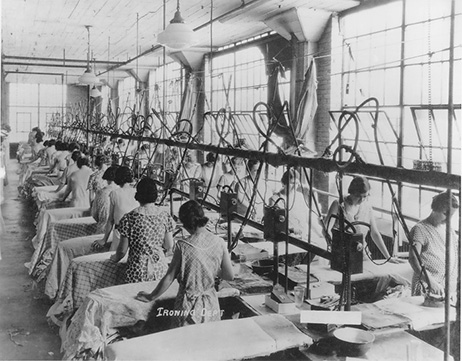I think the most underrated thinker of the 20th century may be Frederick Taylor. Ironically, Taylor's influence on people's day to day existence is wider than the existentialism of Sarte. Taylor's basic notion of bringing science to bear in the workplace is the basis for the majority of industrial engineering, and is the progenitor of the quality movement. His theory of Scientific Management is still the dominant mode of large organizations in search of continuous improvement.

It is a useful approach for any type of low knowledge, sequential work like assembling toys, or serving a McDonald's hamburger. It shines when work goes from station A, to station B, to station C, and so on in a sequence of steps which can predictably be described and analyzed.
The challenge of the modern economy is that lots of it is high value added, non-sequential work. Making a Pixar movie has some sequential parts, but it is also a "pooled" activity in which many people work on things together -- not unlike a cardiac surgical team. I mean, your anesthesiologist is supposed to stay the whole time you are on the table. These specialist come together to make the service possible -- all at the same time, with their own roles. A Navy pilot friend of mine also points out that special forces also work in this synchronizing manner.
Well, Taylorism, with its assumption of taking the knowledge from the worker by observation and making it available for the next laborer, does a poor job of helping high value added knowledge work which is about collaboration, creativity, and dynamic interactions. Also, the people doing the work are often deep experts -- and it is not possible to codify their best abilities as easily as in assembly work. Yet, if you look at many of the efforts to improve productivity of high-value added workers it comes with a logic of standardization, and control. This is why many implementations of field sales force automation systems fail -- because the work is too fluid. (I'm not saying that salespeople can't benefit by more structure, its just that firms often go too far in their attempt to routinize the work, and because salesforces have the power inherent in any group that generates revenue, their resistance is often heeded by senior management.)
Our design cupboard seems bare. I believe it is time to revisit the work of Doug Englebart -- who created the Augmented Knowledge Workshop at Rand Corporation (and was one of the fathers of today's personal computer revolution). His lofty goal was to improve the collective intelligence of mankind. How's that for a BHAG? His approach was a method he called H-LAM/T: Humans with language, artifacts, methods and training. There are many things to note about this approach that are profound, but can be easily missed. First, he notes that people, and the artifacts co-evolve. He also notes that the language system itself heavily influences the nature of the work. For example, Airbus's giant 380 aircraft had a huge language compatibility problem because the German and Spanish manufacturers used an older version of the CATIA design software, and the British and French had upgraded. The misfits due to this measured in over 500 kilometers of needed rewiring per plane! Now that's a language problem.
Another important part of the Englebart approach is to recognize that making people more productive means a complex match among artifacts (e.g. computers), methods (e.g. how the work is done), the language of description, and training of the individuals. The absurd assumption of today's knowledge work is that people need minimal training, the tools can be bought off the shelf, and the language system and methods are stable. No wonder people default to using Taylor's methods.
I believe it is time again to go back to the drawing board and be willing to study how people actually do the work, and what new tools may be needed to help them out. Those who do will have breakthrough productivity. Where will it show up? In profit per employee. If you take Goldman Sach's last quarter, and annualize it, their profit per employee will be almost $500,000 per employee. They also spend the highest percentage of revenue per employee on technology to support their work. WalMart's profit per employee, by contrast, is $9,000 per employee. They can afford a Tayloristic approach.
So, are you treating your high value added knowledge workers like WalMart were Taylor still rules, or like Goldman?